The installation of new pipe or pipe cures are a relief for municipalities or cities that have long needed sewer upgrades. Even though structural integrity has been restored, problems can still occur sooner rather than later. The only way to curb an issue before it causes major damage is with a visual inspection carried out by the right sewer inspection camera.
Sewer Pipe Problems That Can Occur After CIPP Installation
Cured-in-place pipe (CIPP) is a common trenchless repair method for sewer and storm pipes. A felt or fiberglass liner is inserted into a damaged or structurally unsound pipe and, after heat or UV light exposure, hardens to fit snugly to the pipe’s walls. This effort allows the CIPP to serve as a new lining to the pipe, curing it.
CIPP is durable and offers both cost and time savings, but it can’t be left to its own devices after installation. Using a sewer inspection camera to check the upgrade is critical for both an initial post-installation inspection and a follow-up inspection 6 to 9 months after installation. The idea is to allow enough time for the liner to be exposed to the elements to gauge wear and tear and effectiveness.
The sewer inspection camera will allow operators to look at the overall physical appearance of the liner to check its shape and condition:
- Has the liner kept sagged or ovalized?
- Are there bulges or voids?
- Are there any tears or fraying?
- Any lifting or swelling at the manhole interface?
- Are there loose or delaminated areas?
- Are there signs of infiltration?
- Any unusual discoloration?
It’s also important to review secondary finishing details using your sewer inspection camera, such as:
- Grouting
- End dressing
- Main connection seals
- Hanging or trapped debris
Keeping Up with Routine Maintenance of Sewer Pipes
Recently repaired pipes, whether equipped with CIPP liners or brand new, require regular inspections and cleanings. These efforts maximize the longevity of the pipes, identifies blockages or breaks, and can ward off unexpected damage or the need for significant repairs in the future.
The Environmental Protection Agency states that cleaning and inspecting sewer lines is essential to maintaining a properly functioning system and investing in a community’s wastewater infrastructure.
Establishing and sticking to a cleaning and inspection schedule and following a maintenance plan ensures preventive care and proactive measures, rather than being forced to react to catastrophe and encounter unanticipated costs.
Get Sewer Inspection Cameras from Bell Equipment
Bell Equipment serves sewer professionals and municipalities in Michigan and Ohio and offers a range of Envirosight cameras to help maintain what goes on underground. Contact Bell Equipment today to discuss the sewer inspection cameras and equipment that are right for your community or business needs.

.png)